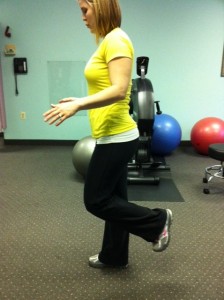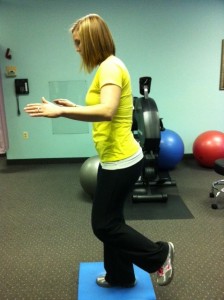While standing, if you can draw an imaginary straight line through your earlobe, the tip of your shoulder, through your knee, and the middle of your ankle, you have good posture. Standing with good posture usually involves doing a slight chin tuck so your head is over your shoulders, pulling your shoulders back and tucking in your stomach.
Good posture lends to less stress on your joints and muscles resulting in less discomfort and risk for injury. At first, maintaining good posture may be tiring. Eventually, you will build up the endurance in your muscles and it will come more naturally.
Here are some examples of stretches that you can perform to help achieve good posture.
Pectoralis muscle stretch– Just put your hands up on a doorway and gently step through with one foot until you feel a stretch. All stretches should be held between 15-60 seconds.
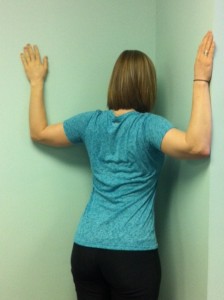
Hamstring stretch– You can sit or stand. Put one foot up on a step or the coffee table and lean toward your foot.
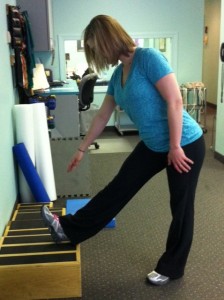
Shoulder blade squeezes– You can just squeeze your shoulder blades together or use an exercise band to row your shoulder blades together.
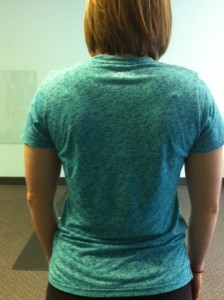
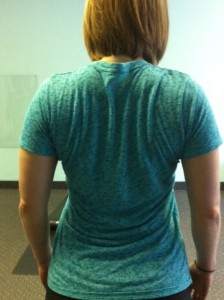
Good posture involves training the body to be in a position that results in less strain on your muscles and joints. If you are looking to improve your posture or decrease your neck/back pain with long-term sitting or standing, make an appointment at Harbor Physical Therapy for an individualized treatment program.





